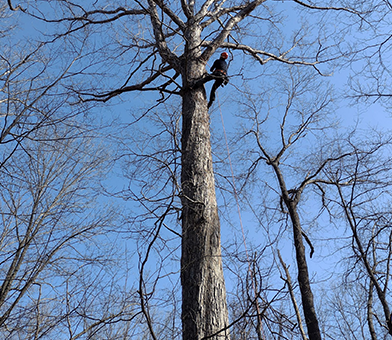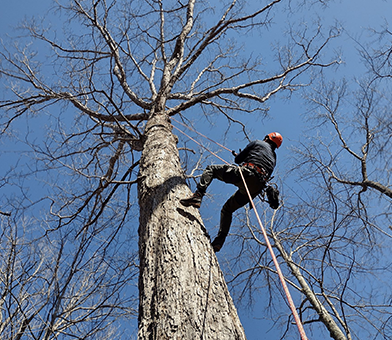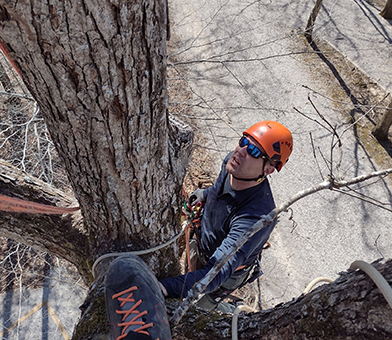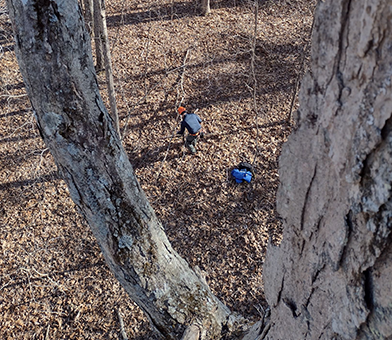Superior Seedlings
Photo on the left: 10-year-old offspring from unimproved parents
Photo on the right: 10-year-old offspring from breeding improved parents to each other
There are two major types of seed orchards that result in production of acorns that nurseries can use to produce superior seedlings for reforestation:
- Grafted seed orchards and
- Seedling seed orchards
Pollen mixing among many superior white oak trees in both of these types of seed orchards maintains genetic diversity in the acorns resulting in improved, genetically diverse white oak seedlings produced at the nurseries for reforestation.
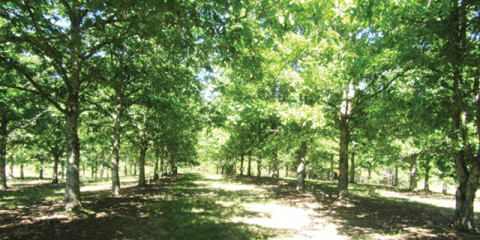
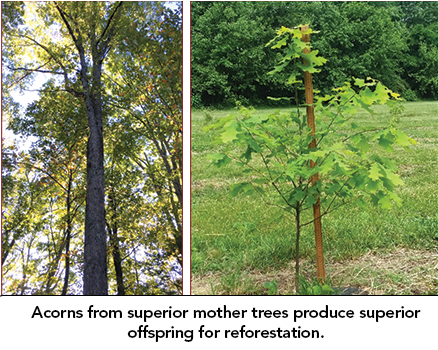
Seedling Seed Orchards: As the seedlings in the progeny tests grow into mature trees, those with desirable traits (relative to what a particular constituency might want) will be selected to remain in the tests and the non-selected (less desirable) trees will be removed from the progeny tests. The progeny tests now contain only superior white oak trees and become seed orchards that will produce acorns the nurseries can use to produce high-quality white oak seedlings.
Controlled breeding in the seed orchard can be used to create offspring with specific desirable traits such as disease or insect resistance.
Grafted Seed Orchards: Twigs (called scions) are collected from the original mother trees that produce superior offspring. Twigs are grafted to create many clones of superior mother trees and they are used to create grafted seed orchards.
-
A “whip and tongue” method is used to graft twigs from mother trees onto oak seedling root stock. Multiple grafted superior mother trees are included in a seed orchard to maintain genetic diversity. Grafted trees can start producing acorns in as little as three years.
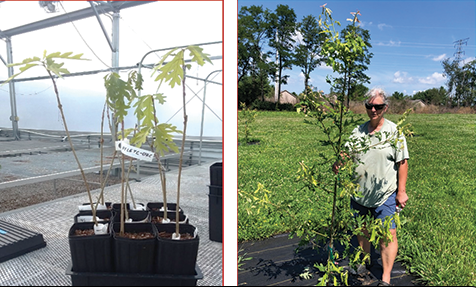
Right: 3-year-old grafted white oak seedlings producing acorns
We use grafted oak trees to create seed orchards because the grafted trees will produce acorns many years sooner than if we grew the oak trees from acorns (5 years versus 20+ years, respectively).
Trees we collect scion material from have been selected due to their desirable qualities. Because we want to replicate this tree, we collect multiple scions and graft them. This creates multiple genetically identical copies to put in the clone bank or seed orchard. We are able to maintain high genetic diversity in offspring produced from acorns in the seed orchard because we have clones from many different trees in the seed orchard that are all pollinating each other.
The best material for the scions are pencil-sized branches on the outside of the crown of the tree. We collect from as high on the tree as possible since this tissue is younger and the subsequent graft is more likely to be successful. Collecting must be done in January. Because trees in nature lose small branches all the time due to storms and animals, they have developed mechanisms to handle broken branches. Thus, collection of scion material does not harm the tree.
Scion Collecting
